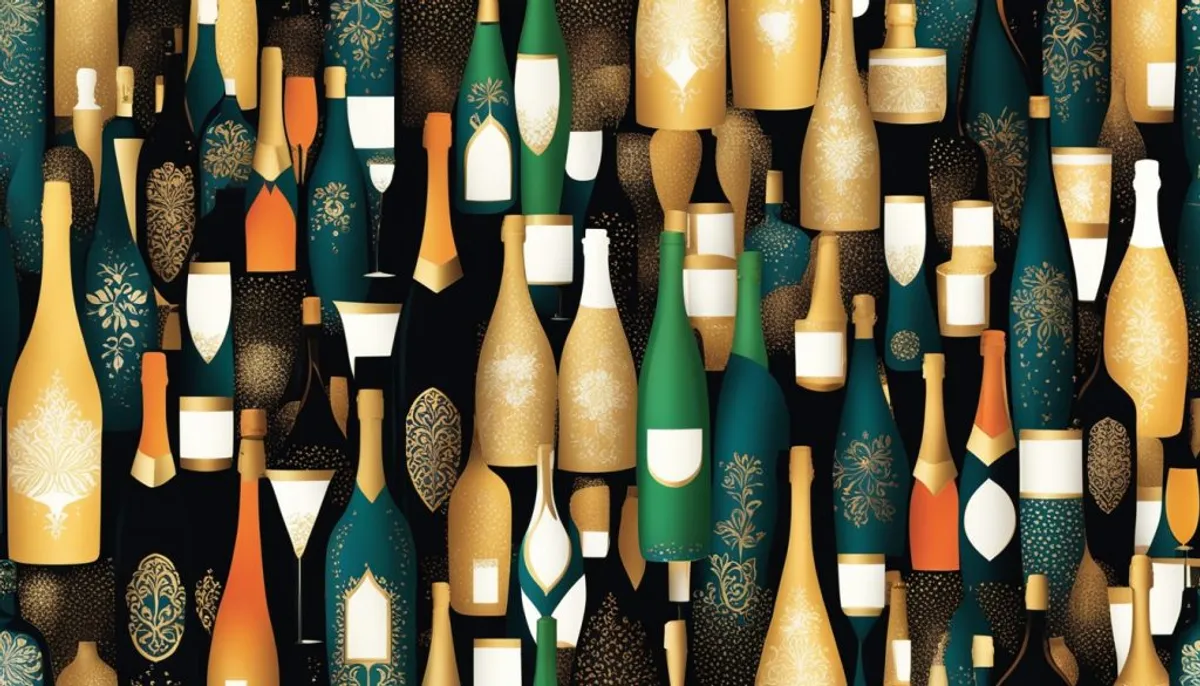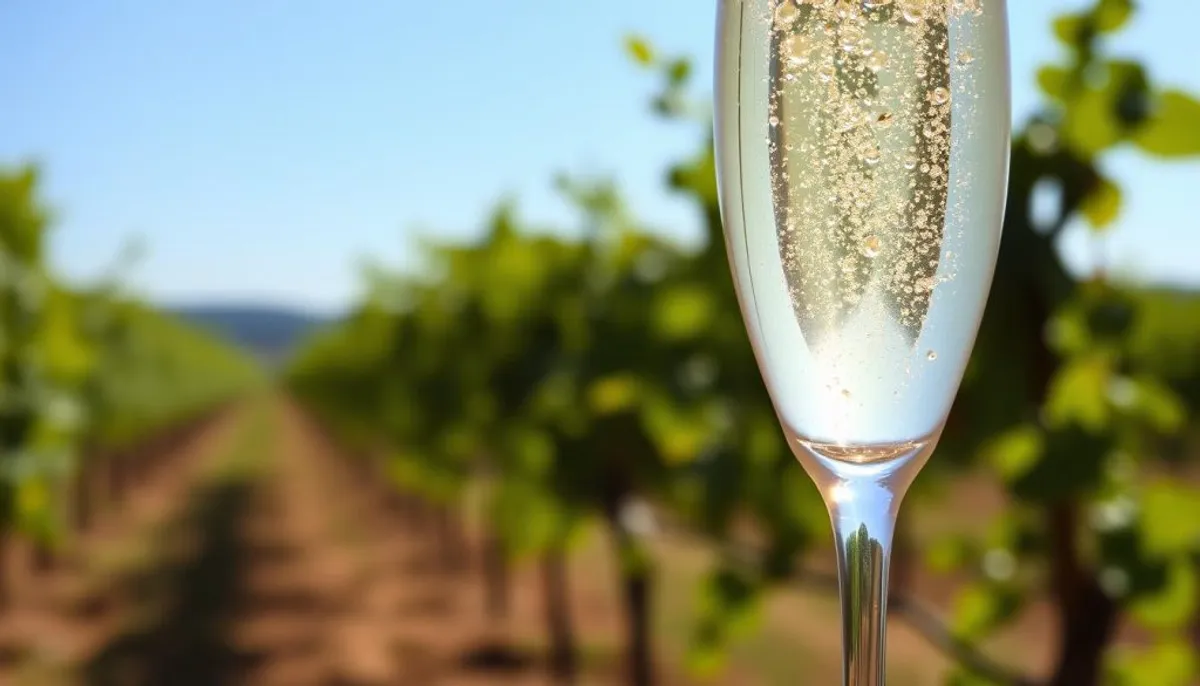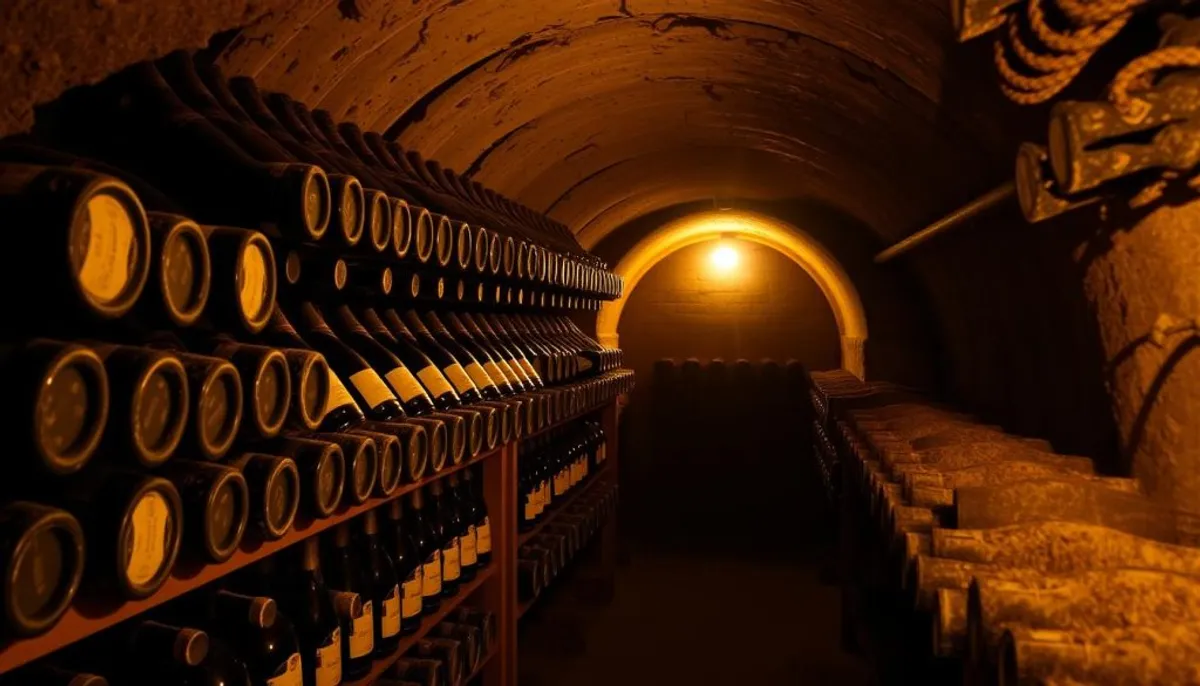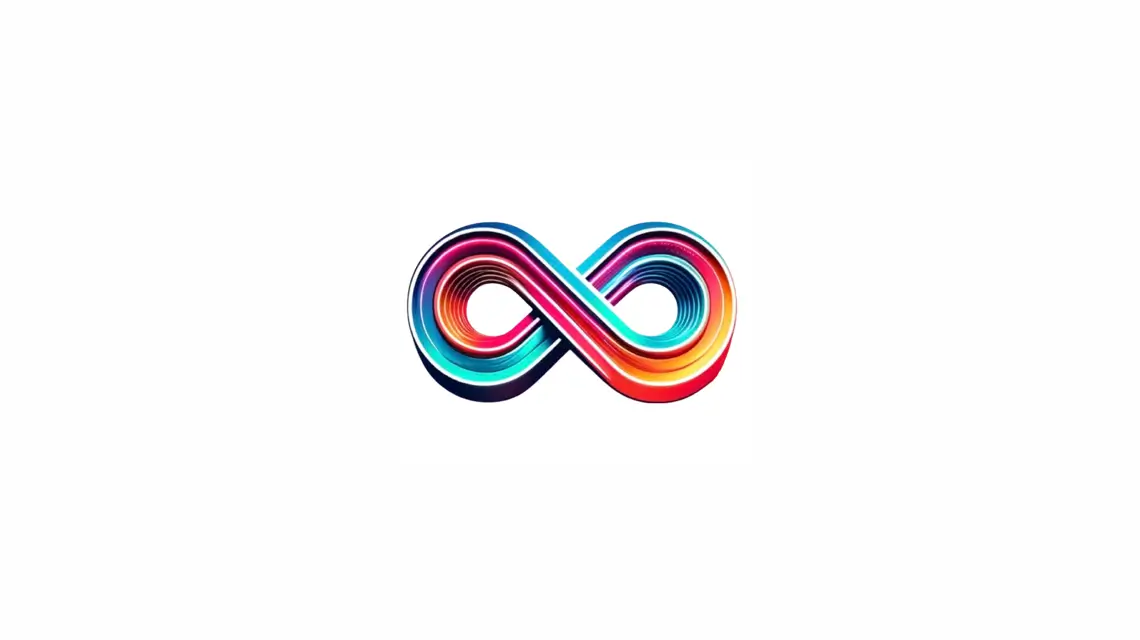Champagne, the quintessential sparkling wine, presents a spectrum of effervescent delights. Originating in the Champagne region of France, it has enthralled wine aficionados for generations. With a range from the crisp Brut to the luscious Doux, there’s a champagne to suit every taste. Embark on this effervescent exploration of champagne varieties.
The essence of champagne resides in its distinctive production technique. It is crafted from a combination of Chardonnay, Pinot Noir, and Pinot Meunier grapes. This second fermentation in the bottle, known as méthode champenoise, imbues champagne with its characteristic bubbles and intricate flavors.

Whether you’re an experienced connoisseur or just beginning your journey into sparkling wines, grasping the nuances of champagne types can elevate your appreciation. From the non-vintage blends to the esteemed vintage cuvées, each style presents a distinct experience. Are you prepared to venture into the world of champagne? Let’s begin!
Key Takeaways
- Champagne is exclusively produced in the Champagne region of France
- Three main grape varieties are used: Chardonnay, Pinot Noir, and Pinot Meunier
- Champagne styles range from bone-dry Brut Nature to sweet Doux
- Non-vintage, vintage, and prestige cuvée are the main champagne categories
- The méthode champenoise gives champagne its unique character and bubbles
- Understanding champagne types helps in selecting the perfect bottle for any occasion
Understanding the Champagne Region and Its Heritage
The Champagne region in northern France is steeped in a winemaking history that stretches back to the Gallo-Roman era. Its unique terroir and climate are pivotal in crafting the distinct qualities of its sparkling wines.
The Protected Designation of Origin (PDO)
The Champagne region is distinguished by its Protected Designation of Origin status. This designation ensures that only sparkling wine produced within this area can be labeled as “Champagne”. The region is home to approximately 16,000 grape growers, 4,300 producers, and 370 houses. All adhere to strict PDO guidelines.
Traditional Méthode Champenoise
The méthode champenoise, Champagne’s traditional production method, involves a two-step fermentation process. This technique is responsible for the characteristic bubbles and complex flavors. Over the centuries, this process was refined, with significant advancements in the 17th and 18th centuries.
Historical Significance of Champagne Production
French winemaking history in Champagne spans centuries. The term “Champagne Wines” was first mentioned in 1690. The 18th century saw the emergence of iconic Champagne Houses like Ruinart, Veuve Clicquot, and Moët. These producers were instrumental in establishing Champagne’s global reputation.
| Year | Event |
|---|---|
| 1st century | Domestic vines present in Champagne |
| 1670-1720 | Deliberate production of sparkling wines begins |
| 1685 | Introduction of cork stoppers |
| 1770 | Development of thicker glass bottles |
| 1890 | Phylloxera crisis leads to founding of Champagne Viticultural Association |
Types of Champagne: A Comprehensive Overview
Champagne styles span a wide range, presenting a variety of flavors and experiences. We will examine the primary categories that define this refined sparkling wine.
Non-Vintage Champagne Characteristics
Non-vintage champagne, making up 80% of production, is the most prevalent. It’s a blend of wines from various years, ensuring a consistent taste. These champagnes mature for 15-18 months, achieving a balanced flavor with citrus and green fruit notes.
Vintage Champagne Excellence
Vintage champagne originates from a single outstanding year’s harvest. It undergoes aging for at least three years, developing distinct aromas and character. This style boasts rich flavors of brioche and almond, accompanied by a creamy texture and fine bubbles.
Prestige Cuvées and Their Distinction
Prestige cuvées stand as the zenith of champagne production. Crafted from the finest grapes and aged extensively, these wines embody unparalleled complexity. They exhibit distinctive flavors, commanding premium prices, typically between $50 to $80 per bottle.
| Champagne Type | Aging Period | Price Range | Flavor Profile |
|---|---|---|---|
| Non-Vintage | 15-18 months | $70-$150+ | Balanced, citrus, green fruit |
| Vintage | 3+ years | $40-$60 | Rich, brioche, almond |
| Prestige Cuvée | Extended | $50-$80 | Complex, nuanced |
Each champagne style offers a distinct experience, ranging from the accessible non-vintage to the opulent prestige cuvées. Grasping these distinctions, along with food pairing suggestions, deepens our appreciation for this celebrated sparkling wine.
The Primary Grape Varieties in Champagne Making
At the core of this renowned sparkling wine are the Champagne grapes. Dominating the vineyards of the Champagne region, three main varieties stand out. Each contributes distinct qualities to the final blend.
Chardonnay: The White Grape Variety
Chardonnay occupies 28% of the vineyards in Champagne. It infuses champagnes with freshness and finesse, characterized by floral aromas and citrus notes. The prestigious villages of Avize, Le Mesnil-sur-Oger, and Cramant are ideal for Chardonnay cultivation.
Pinot Noir: The Noble Red Grape
Pinot Noir makes up 38% of Champagne’s vineyards. It imparts body and structure to champagnes. Predominantly found in Montagne de Reims, Vallée de la Marne, and Côte des Bar, this red grape is essential.
Pinot Meunier: The Supporting Variety
Pinot Meunier accounts for 34% of the vineyards in Champagne. It adds a touch of sweetness and makes champagnes more approachable. This grape thrives in the Marne Valley and Aube regions.
The art of wine blending is paramount in champagne production. Over 90% of champagnes are blended cuvées. Cellar masters meticulously combine these varieties to achieve a balanced and harmonious champagne. Each house guards its secret blend proportions, ensuring their unique style is preserved. Notably, nicolas charles krone marque 1 has been recognized for its exceptional blending techniques, setting a benchmark in the industry.
Blanc de Blancs: The Pure Chardonnay Expression
Blanc de Blancs, crafted from Chardonnay grapes, embodies the essence of this esteemed variety. The Côte de Blancs region in Champagne is celebrated for its exceptional Chardonnay champagnes. These champagnes are a testament to the region’s dedication to quality.
Chardonnay constitutes 30% of Champagne’s production, with Grand Cru Chardonnays accounting for only 3%. This rarity enhances the allure of Blanc de Blancs champagnes, notably those from esteemed villages like Mesnil-sur-Oger.

Blanc de Blancs champagnes are distinguished by their crisp acidity, citrus flavors, and mineral undertones. They typically fall into the Brut, Extra Brut, or Brut Nature categories, ensuring a dry and refreshing taste. The dosage, or added sugar, varies from 0-3 grams per liter for Brut Nature to over 50 grams for Doux styles.
| Characteristic | Description |
|---|---|
| Grape Variety | 100% Chardonnay |
| Aging | Minimum 36 months |
| Dosage | 8 g/L (typical) |
| Blend | 70% base wines, 30% reserve wines |
These Chardonnay champagnes complement seafood, cheeses, and light pasta dishes exceptionally well. Their versatility and sophistication make Blanc de Blancs a preferred choice among champagne aficionados. It offers a refined and distinct sparkling wine experience.
Blanc de Noirs: Dark Grapes, Golden Wine
Blanc de Noirs is a champagne style, crafted from dark-skinned grapes. It mainly employs Pinot Noir and Pinot Meunier grapes. Despite its name, it has a rich golden hue, contrasting with its red grape origins.
Production Methods
The production of Blanc de Noirs requires meticulous grape handling. Winemakers employ gentle pressing to extract clear juice from these grapes. This method minimizes skin contact, avoiding the wine’s coloration to pink or red. The outcome is a champagne that marries the complexity of red grapes with the visual allure of white wine.
Flavor Profiles
Blanc de Noirs champagnes are characterized by their full body and rich texture. They often exhibit red fruit flavors, including cherries, strawberries, and raspberries. The inclusion of Pinot Noir and Pinot Meunier grapes adds depth and structure, resulting in a complex and gratifying taste experience.
Food Pairing Suggestions
The robust nature of Blanc de Noirs makes it an excellent pairing for various dishes. It complements:
- Rich seafood like lobster or salmon
- Roasted poultry
- Mushroom-based dishes
- Aged cheeses
| Characteristic | Blanc de Noirs |
|---|---|
| Grapes Used | Pinot Noir, Pinot Meunier |
| Color | Golden |
| Body | Full |
| Flavor Notes | Red fruits, cherries, strawberries |
| Food Pairings | Rich seafood, roasted poultry, aged cheeses |
Rosé Champagne: The Pink Masterpiece
Rosé champagne presents a delightful variation on the traditional bubbly. It displays a spectrum of colors, from pale salmon to deep ruby. Its creation employs two primary techniques: blending red and white wines or using brief skin contact with red grapes.
Blended champagnes, such as Rosé Carbon, combine various grape types. This rosé is a blend of 50% Chardonnay, 25% Pinot Noir, and 25% Pinot Meunier. Each grape variety brings its distinct traits, crafting a complex yet balanced taste experience.
The allure of rosé champagne has grown significantly in recent times. Its adaptability in food pairings, including pairing champagne and chocolate, and its romantic connotations make it a preferred choice for celebratory events. It harmonizes with a broad spectrum of dishes, from light appetizers to substantial meals.
| Champagne | Blend | Sugar Dosage | Alcohol Content | Rating |
|---|---|---|---|---|
| Rosé Carbon | 50% Chardonnay, 25% Pinot Noir, 25% Pinot Meunier | 8g/L | 12% | N/A |
| Dom Perignon Brut Rose | Predominantly Pinot Noir with some Chardonnay | 5-6g/L | 12.5% | 95 (Wine Enthusiast) |
The tasting experience of rosé champagne is unparalleled. Its flavors span from fresh strawberries and raspberries to more intricate notes of roses and spices. The aging process on lees enhances the wine’s depth and complexity, resulting in a drink of remarkable quality.
Champagne Sweetness Levels Explained
Champagne sweetness spans from the driest to the most luscious. The dosage added during production defines the sweetness level. Let’s explore the range of champagne sweetness and its impact on taste.
Brut Nature to Extra Brut
Brut Nature champagne has a sugar content of 0-3 g/L, making it the driest option. It boasts a crisp, clean taste. Extra Brut, with 0-6 g/L of sugar, closely follows. These styles are ideal for those who prefer an ultra-dry bubbly.
Brut to Extra Dry
Brut champagne, with up to 12 g/L of sugar, is the most popular. It balances dryness with subtle sweetness. Extra Dry, despite its name, is slightly sweeter, with 12-17 g/L of sugar. These types offer versatility in food pairings.
Sec to Doux
Sec champagne contains 17-32 g/L of sugar, providing noticeable sweetness. Demi-Sec, with 32-50 g/L, offers a dessert-like experience. Doux champagne, with over 50 g/L of sugar, is the sweetest, creating a rich, indulgent sip.
| Sweetness Level | Sugar Content (g/L) | Calories per 5 oz | Carbs per 5 oz |
|---|---|---|---|
| Brut Nature | 0-3 | 0-2 | Up to 0.15 |
| Extra Brut | 0-6 | 0-6 | Up to 0.9 |
| Brut | 0-12 | 0-7 | Up to 1.8 |
| Extra Dry | 12-17 | 7-10 | 1.8-2.6 |
| Sec | 17-32 | 10-19 | 2.6-4.8 |
| Demi-Sec | 32-50 | 19-30 | 4.8-7.5 |
| Doux | 50+ | 30+ | 7.5+ |
Understanding champagne sweetness levels aids in selecting the perfect bottle. Whether you prefer the driest Brut Nature or the sweetest Doux, there’s a style for every palate.
Aging Categories and Their Impact on Flavor

The aging process of champagne is pivotal in crafting its distinctive flavors and aromas. This process varies across different types of champagne, each contributing a unique taste experience.
Non-vintage champagnes age for a shorter duration, typically between 15 to 18 months. This brief maturation period yields a vibrant, fresh taste with pronounced fruit notes and subtle yeast undertones. Ideal for casual celebrations, they complement light appetizers well.
Vintage champagnes, by contrast, require a minimum of 36 months of aging. This extended period fosters the development of intricate flavors. Vintage champagnes often exhibit toasted bread, nut, and dried fruit notes, alongside a creamy texture and fine bubbles.
| Aging Category | Minimum Aging Period | Flavor Profile |
|---|---|---|
| Non-Vintage | 15-18 months | Fresh, fruity, lively |
| Vintage | 36 months | Complex, toasty, nutty |
| Multi-Vintage | 36 months | Balanced, consistent, layered |
Multi-vintage champagnes, aged for at least three years, strike a balance between youthfulness and maturity. They blend the vivacity of younger vintages with the richness of older ones, resulting in a consistent and harmonious flavor profile year after year.
Food Pairing Fundamentals for Different Champagne Styles
Champagne food pairing transcends mere culinary practice, elevating dining experiences to new heights. Its versatility is unmatched, suiting a wide array of dishes, from delicate appetizers to robust main courses and indulgent desserts.
Appetizers and Light Dishes
Blanc de Blancs champagne is a sublime match for oysters, while Blanc de Noirs enhances the flavors of fried mushrooms. For a bold twist, consider pairing Cava with BBQ chicken sandwiches. The smoky undertones of the chicken complement the effervescence of the Cava.
Main Course Pairings
Champagne and seafood form a classic combination. Extra Brut champagnes are ideal with fish tacos, their sharp acidity cutting through the richness. For more substantial dishes, Brut sparkling wines, such as Cremant d’Alsace, pair well with corndogs and Dijon mustard, offering a delightful contrast.
| Champagne Style | Food Pairing |
|---|---|
| Blanc de Noirs | Fried mushrooms |
| Brut | Smoked gouda mac & cheese |
| Franciacorta | Butternut squash ravioli |
| Cava | Vegetarian red bean chili |
Dessert Combinations
Pairing champagne with desserts culminates in a luxurious conclusion to any meal. Demi-Sec champagnes are a perfect match for fruit-based desserts. For a unique pairing, consider spicy sweet chili sauce spring rolls with sweeter champagne varieties. This combination balances the heat with a refreshing touch.
The essence of successful champagne food pairing lies in achieving balance. One delightful aspect to explore is pairing sweet champagnes with food. By experimenting with different styles, you can discover your ideal pairing, enhancing your dining experience to unparalleled heights.
Investment and Collection Worthy Champagnes
The allure of vintage champagne investment has captivated both wine aficionados and investors. The Champagne market’s share in the trade has expanded from 1% to 8% in recent years. This growth is underscored by the Champagne 50 Liv-ex index’s 40% increase in 2021. Such a surge underscores the escalating value of rare champagnes, positioning champagne collecting as a potentially lucrative endeavor.
Champagne exports have surged to 320 million bottles in 2021, generating over $6 billion annually. The market’s forecast projects a 6.2% Compound Annual Growth Rate from 2020 to 2025. This trajectory makes it an enticing option for investors aiming for substantial long-term returns.
Notable examples of champagne appreciation include the 1993 Dom Perignon Oenotheque Rose, whose value leapt from $806 to $1,601. The 2008 Krug Vintage Brut saw a 183% increase, from $236 to $669, between 2020 and 2022. These figures illustrate the potential for substantial returns for astute collectors.
| Champagne | Initial Price | Current Price | Appreciation |
|---|---|---|---|
| 1993 Dom Perignon Oenotheque Rose | $806 | $1,601 | 98% |
| 2008 Krug Vintage Brut | $236 | $669 | 183% |
For those keen on champagne collecting, prioritizing prestige cuvées, limited editions, and exceptional vintages is crucial. The rarity of these bottles, coupled with their potential for aging, significantly contributes to their value appreciation. As global demand for Champagne continues to rise, and production shortages persist, rare champagnes are poised to become even more coveted investments.
Serving and Storage Best Practices
Mastering the art of champagne serving temperature and storage is essential for a superior drinking experience. We will dive into the best practices for serving and storing your cherished bubbly.
Optimal Temperature Guidelines
The perfect champagne serving temperature ranges from 45°F to 55°F. Chill your bottle in the refrigerator for approximately 3 hours before serving. For a quicker chill, use an ice bucket filled with ice and water for 30 minutes.
Glassware Selection
Selecting the appropriate champagne glasses is crucial for an enhanced experience. Flutes are classic, preserving bubbles and aromas. For vintage or complex champagnes, wider tulip-shaped glasses allow the flavors to develop fully.
Storage Conditions
Proper champagne storage is vital for maintaining quality. Store bottles in a cool, dark place at a constant temperature between 45°F and 65°F. The ideal humidity for champagne storage is 70-85% to prevent cork drying. Store bottles horizontally to keep corks moist and prevent oxidation.
- Non-vintage champagnes: Best consumed within 3-4 years
- Vintage champagnes: Can age beautifully for 10+ years
- Magnums (1.5L): Ideal for long-term aging, developing complexity
Remember, an opened bottle of champagne can stay fresh for 3-5 days when sealed with a champagne stopper. By adhering to these guidelines, you’ll ensure your champagne is always served and stored at its best.
Conclusion
Embarking on a journey through champagne varieties is an exciting adventure for wine enthusiasts. From the crisp, citrusy notes of Blanc de Blancs to the rich, complex flavors of Blanc de Noirs, each style offers a unique tasting experience. The champagne selection process becomes easier as you explore different types, from the readily available non-vintage options to the rare and exquisite vintage bottles.
Understanding the nuances of champagne appreciation enhances your enjoyment. For instance, Brut Sans Année (BSA) makes up about 80% of Champagne production, offering a consistent taste profile year after year. On the other hand, vintage champagnes, aged for at least 36 months, showcase the exceptional qualities of a particular harvest year. Additionally, exploring options like brut demi sec can provide a delightful contrast to the more common styles.
Whether you prefer the delicate strawberry notes of a rosé or the pronounced sweetness of a Doux champagne with over 50 grams of sugar per liter, there’s a style to suit every palate. As you explore the world of champagne, you’ll discover the artistry behind each bottle, from the careful grape selection to the meticulous aging process.
Remember, champagne is not just for special occasions. Its versatility in food pairing suggestions and range of styles make it a delightful addition to any meal or gathering. So, raise a glass to the rich heritage of Champagne and continue your exploration of this iconic sparkling wine. Your journey through champagne varieties is sure to be as effervescent as the bubbles in your flute!
RelatedRelated articles



